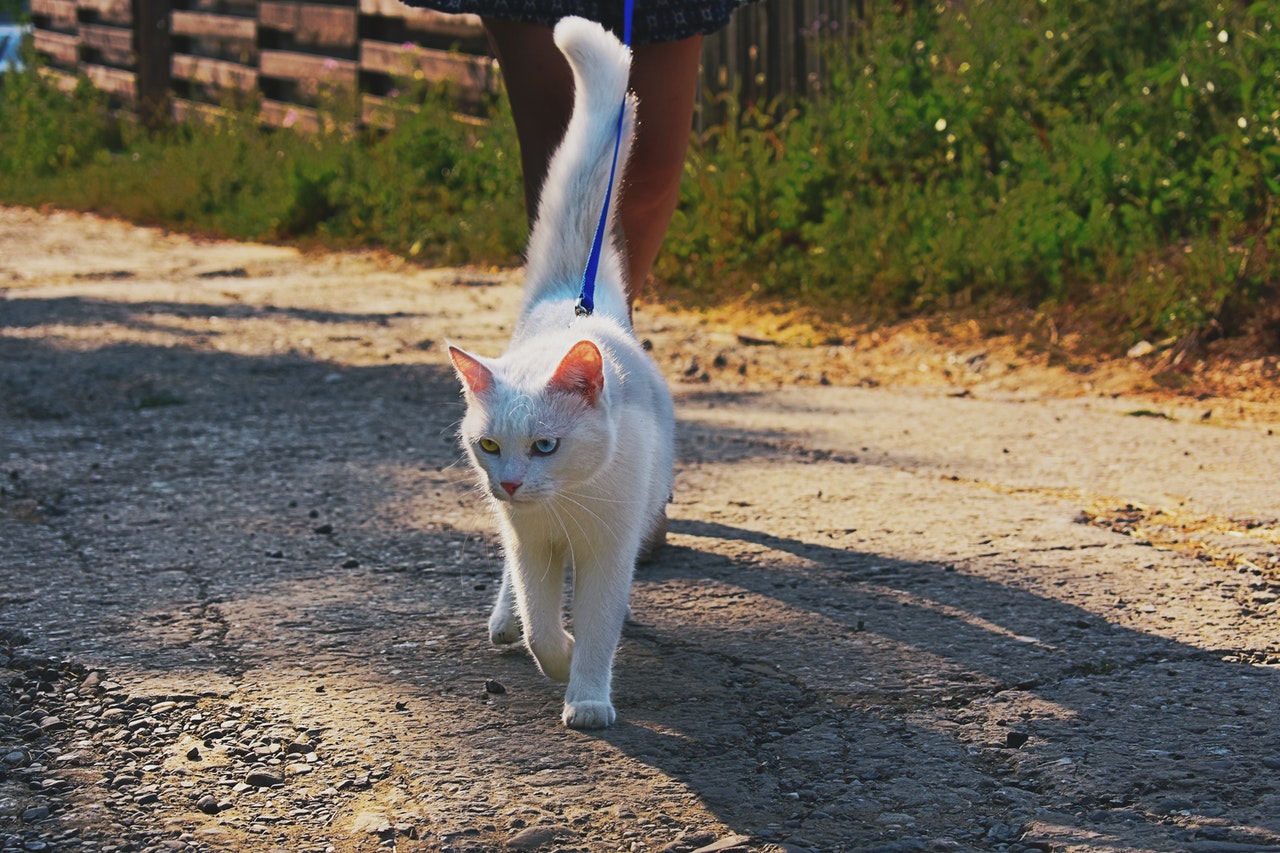How to teach your cat to walk on a leash
by Ontario SPCA and Humane Society | Cat Care | November 24, 2023

Teaching a cat to walk on a leash is different than walking a dog. Sometimes you can cue them to follow you, whereas other times you may be following them. But you CAN train them to do it! Here is a short guide to training your cat to walk on a leash.
Before we get started, it’s important to note that outdoor activity with your cats should always be supervised. Cats left outside to roam freely typically have a lower average life expectancy due to dangers such as traffic, predators and the elements.
Get started with harness training
The cat should be familiar with wearing a harness (see our blog, “How to teach a cat to wear a harness”) and should be comfortable wearing a harness for 5+ minutes before starting leash training. Not all cats will want to walk on a leash and there should be very close monitoring of fear, anxiety and stress. Always attach the lightweight leash to the harness and never to the cat’s collar.
Here’s what you’ll need for leash training:
- Quiet secure area
- Appropriately fitted harness – see our blog on harness training
- 6 – 8’ light leash (longer leash allows more choice for the cat’s movements)
- High value treats
- Feather wand or cat’s favourite toy
- Clicker (not necessary but can be used)
Getting the cat acclimatized to the leash
- Starting in a safe, quiet place where the cat feels comfortable, attach a lightweight leash to the cat’s harness.
- Toss treats and/or toys and allow the cat to move around the room.
- As the cat is walking around and there is no tension on the leash, mark (click or say “yes”) and reward.
- As the cat moves around the room, make sure to follow them to prevent any tension on the leash.
Note: when the cat initially feels light tension on the leash they may try to pull or back up, always watch leash positioning and make sure harness is appropriately fitted.
Walking on the leash
- Using a target such as a feather wand, encourage the cat follow it.
- Mark (click or say “yes”) and reward when the cat follows the target for one or two steps.
- Gradually increase the number of steps the cat must take to get the reward.
- Once the cat is following the target for 10 or more steps, add the cue “Let’s go,” then mark (click or say “yes”) and reward.
Going for a walk
- Choose a quiet time and place to walk the cat. Choose an area indoors where they are comfortable.
- Ensure they have access to a safe space where they can retreat if they feel anxious, fearful or stressed.
- Using your target, for example feather wand toy, say “Let’s go” to encourage the cat to walk on the leash.
- Allow the cat to explore on the leash while watching their body language, mark (click or Say “yes”) and reward while the cat is calm.
Purr-severance pays off
Keep walks very short 3 -5 min to start and always monitor your cat’s fear, anxiety and stress levels. Be aware that there are many factors that can frighten the cat such as loud noises, wind, open space, etc.
Patience and purr-severance pays off, with many cats learning to enjoy walking on a leash. Happy tails to you and your feline friend!
Check out more articles on cat care and training tips on our blog.
Categories
Testimonial
Totally rock
All of your wonderful staff & volunteers totally rock. The amazing compassion and work you provide on a daily basis is incredible.
